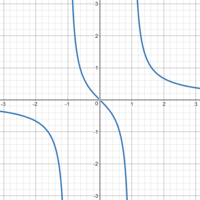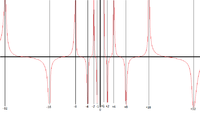cassacosmin
New member
- Joined
- Apr 27, 2019
- Messages
- 6
I know that the simplest rectangular hyperbola is described by the reciprocal function y=1/x. It has two orthogonal vertical asymptotes at y=0=x and two horizontal asymptotes at -∞ and +∞ .
Now, I have another kind of hyperbola which has two opposite vertical asymptotes at x=-1 and x=+1, and an inflection point at y=0=x. This curve is constrained between -1 and +1.
What kind of function would describe best this curve?
It should be some variation on the reciprocal function, because its curvature is similar to that of the rectangular hyperbola.
It is similar to a logit function, but the curvature is different.
Thanks.
Now, I have another kind of hyperbola which has two opposite vertical asymptotes at x=-1 and x=+1, and an inflection point at y=0=x. This curve is constrained between -1 and +1.
What kind of function would describe best this curve?
It should be some variation on the reciprocal function, because its curvature is similar to that of the rectangular hyperbola.
It is similar to a logit function, but the curvature is different.
Thanks.






